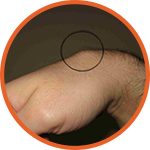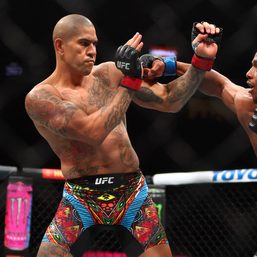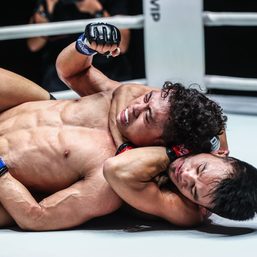SUMMARY
This is AI generated summarization, which may have errors. For context, always refer to the full article.

MANILA, Philippines – The battle between great boxers Floyd Mayweather Jr. and Manny Pacquiao on Saturday, May 2 (Sunday, May 3 in Manila) has been a very tough battle.
With both boxers spending at least two decades mastering the sport, the two has found each other a difficult opponent.
Just like any other boxers, both Pacquiao and Mayweather may have incurred injuries due to well-practiced hard punches that each of them delivered.
Rappler looks at some of the injuries that boxers are vulnerable to in fights.
 |
Lacerations Lacerations occur when skin splits and bleeds, usually as a result of contact from an opponent’s glove or head. This type of injury does not normally end a bout on its own, but it does impair a fighter’s ability to box. |
 |
Eye injuries Eye injuries may be a result of either direct contact or shock waves set up in fluid contents. Damage to the eyes may present itself as injury to the retina, retinal detachment and retinal hemorrhage, among others. |
 |
Boxer’s fracture The Boxer’s Fracture is a break in the hand just below the knuckle of the ring or little finger. This injury usually occurs when a person punches an immovable object with a closed fist. Someone suffering from a Boxer’s Fracture may experience instant pain, hand swelling, difficulty moving the affected fingers and discoloration or bruising of the skin. |
 |
Trigger Finger Trigger Finger is a condition in which one’s finger gets locked in a bent “trigger” position, before suddenly releasing. Boxers tend to suffer from the Trigger Finger because of their constant clenching of fists while boxing. |
 |
Carpal Bossing Carpal Bossing is a condition which refers to the formation of a lump on the back of the hand between the long finger bones and the small wrist bones. The thinning of the articular cartilage lining results in arthritis, which encourages the formation of new bone. |
 |
Shoulder dislocation or impingement Shoulder dislocation is a common injury among contact sports which involve heavy knocks to the body. Dislocation of the shoulder occurs when the humerus bone (the upper arm) divides itself from the scapula (the shoulder blade) at the glenohumeral joint. Shoulder impingement occurs when the acromion (the bone covering the shoulder joint) suffers from repeated blows. The boxer then experiences pain when moving his arm when it is level with their shoulder. This can lead to muscle weakness and long-term ligament damage. |
 |
Patellofemoral pain syndrome Patellofemoral pain syndrome is usually a result of the “boxers shuffle”—a rhythmic bouncing of boxers to dodge and retaliate blows. This manifests in outer knee pain. |
 |
Kidney damage Kidney damage is rare nowadays, considering that punches to the kidneys are illegal at all levels of boxing. A heavy blow to the kidney could cause kidney failure. |
 |
Brain trauma The American Association of Neurological Surgeons says that 90% of boxers sustain a brain injury. Hitting the head while boxing shakes and affects the brain within the skull, thereby causing a concussion, which may cause unconsciousness, nausea, confusion, a brief loss of short-term memory and a headache. Brain damage may occur immediately and lead to death or develop over time due to sustained trauma to the head. Damaged brain tissue remains damaged. |
Death
Hard punches could even become very lethal for boxers.
Boxers’ deaths due to the sport are not uncommon. A study in 2010 revealed that there has been an average of ten boxing deaths per year since 1900, with 80% due to head and neck injuries.
Just last March, 23-year old Australian boxer Braydon Smith died two days after losing consciousness after his first professional defeat in a bout with Philippine boxer John Moralde.
In the same month, 2000 Olympic super-heavyweight champion Audley Harris announced that he was retiring from boxing after he had discovered that his 38-fight professional career had left him with traumatic brain injuries, vision problems and severe mood swings. – Rappler.com
SOURCES: Summit Physio, Men’s Health, Physio Room, Physio Works, various news websites
Photos of laceration, eye injury, trigger finger, patellofemoral pain syndrome and brain trauma from Shutterstock. Photos of boxer’s fracture, carpal bossing, shoulder dislocation and kidney failure from Wikimedia Commons
Alexandra Bichara is a Rappler intern.
Add a comment
How does this make you feel?





There are no comments yet. Add your comment to start the conversation.